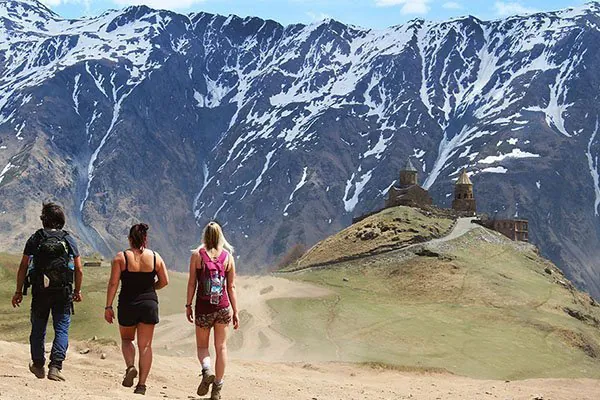Georgia is one of Europe’s most affordable backpacking destinations—by embracing local transport, simple accommodations, and street-food culture, you can explore stunning landscapes and rich heritage on a shoestring budget.
1. Travel Off-Peak and Shoulder Seasons
Avoid the high summer months (July–August) when prices for lodging and transport can surge 20–30%. Instead, plan your trip in April–June or September–October to enjoy mild weather, thinner crowds, and lower costs for guesthouses and hostels.
2. Use Marshrutkas for Regional Travel
Georgia’s minibus system, known as marshrutkas, connects cities and mountain villages at dirt-cheap rates. For example:
- Tbilisi → Kazbegi: ~$4, 3 hours
- Tbilisi → Batumi: ~$8, 6 hours
- Kutaisi → Mestia: ~$7, 7 hours
Arrive at the local bus station early, buy tickets directly, and be prepared for tight seating—marshrutkas embody authentic local travel.
3. Hitchhike with Local Drivers
Hitchhiking is generally safe and common, especially along the Georgian Military Highway between Tbilisi and Stepantsminda. Many drivers are eager to practice English and offer you rides free of charge. Always confirm the destination and agree on drop-off points before boarding.
4. Sleep in Guesthouses and Dorm-Style Hostels
Opt for family-run guesthouses in villages (from $10 per night) or hostels in cities ($8–$12 per night). Many provide simple breakfast and free use of kitchen facilities, allowing you to cook local staples like khachapuri and lobiani, significantly cutting food expenses.
5. Eat Like a Local
- Street Food: Khachapuri (cheese bread) for $1–$3, khinkali (dumplings) at $0.30–$0.50 each, and local pastries.
- Market Meals: Grab fresh fruit, cheese, and bread from bazaars for picnics under $5 per person.
- Set-Menu Lunches: Ask for “business lunch” (biznes lunche) in Soviet-style cafés in Tbilisi for a three-course meal under $4.
6. Leverage Free and Low-Cost Attractions
- Self-Guided Walking Tours: Tbilisi’s Old Town, Batumi Boulevard, and Kutaisi’s Sataplia Nature Reserve offer scenic strolls at no charge.
- Free Museum Days: Check Georgian National Museum schedules—entry is often waived on certain weekdays.
- Natural Wonders: Public beaches in Batumi, Borjomi-Kharagauli National Park hiking trails, and Martvili Canyon boat rides (€8) are inexpensive ways to experience Georgia’s outdoors.
7. Travel Light with Public Water Sources
Bottled water adds up. Instead, carry a refillable bottle and filter or sterilize tap water from safe public fountains such as Tbilisi’s sulfur-bath district. Always boil water when uncertain, especially in remote areas.
8. Use Digital Nomad and Travel Apps
- Maps.me: Offline navigation without roaming charges.
- Hitchwiki: Hitchhiking spots and ride-sharing tips.
- KarTranzit: Marshrutka schedules and ticket prices.
- Couchsurfing: Find local hosts or free meetups for cultural exchange.
9. Share Costs with Fellow Travelers
Join backpacker groups on Facebook or at hostels to split taxi fares in remote regions, book group tours (e.g., 4×4 Kazbegi day trips at $15), and exchange cooking duties in communal kitchens.
10. Bargain Respectfully
In markets and guesthouses, polite haggling is expected—offer 10–20% under the initial price for souvenirs, homestay rates, or taxi rides. A friendly attitude and basic Georgian greetings like “gamarjoba” (hello) can go a long way in securing fair deals.
By combining local transport hacks, modest accommodations, authentic dining, and free or low-cost attractions, you can traverse Georgia’s diverse regions—from Tbilisi’s cobbled streets to Svaneti’s mountain passes—without breaking your budget.
